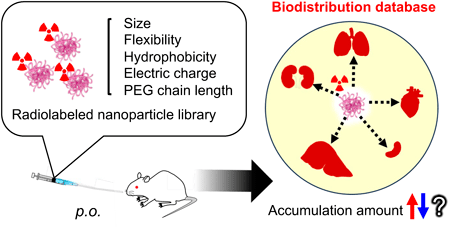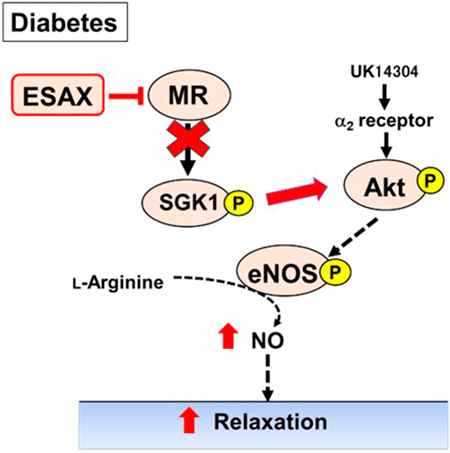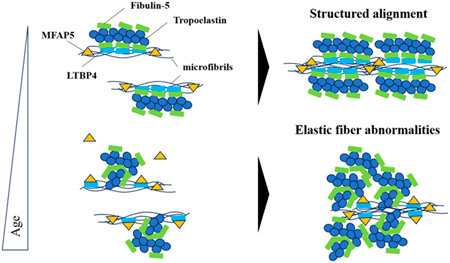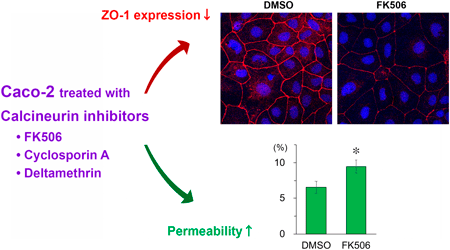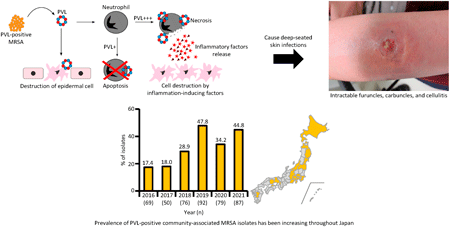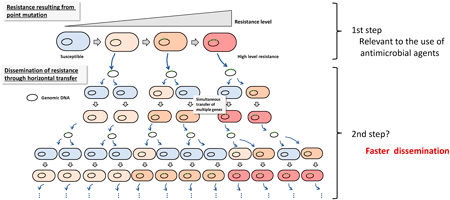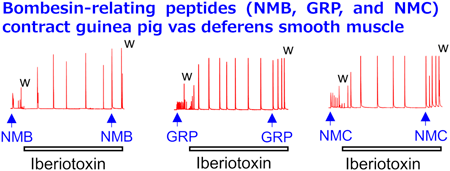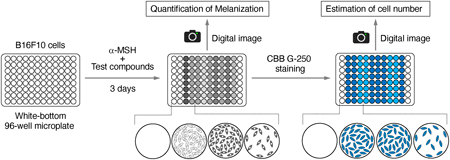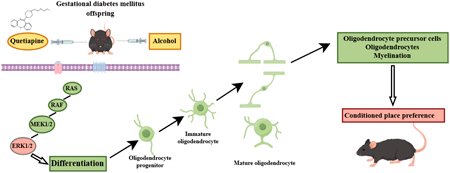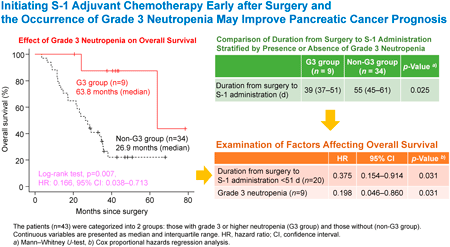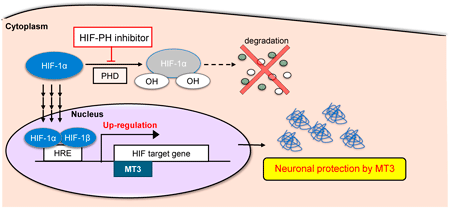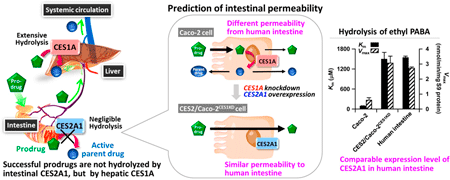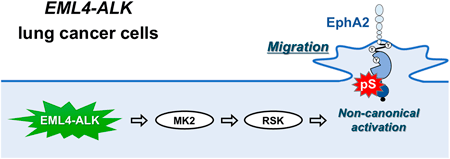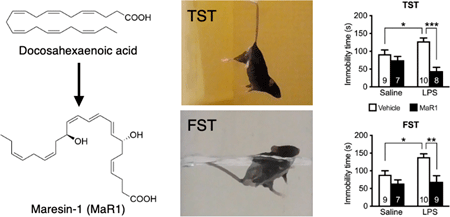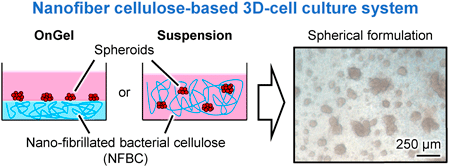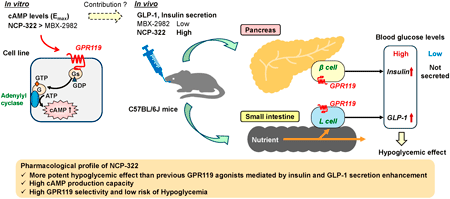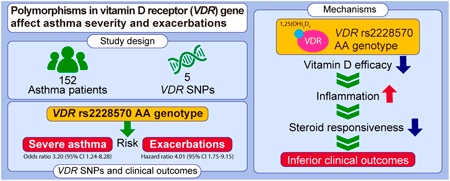-
Editor's pick
Biodistribution of orally administered nanoparticles (NPs) should be precisely controlled to maximize their function and avoid the side effects. Although several studies have been conducted to understand the influence of NP properties on the biodistribution of NPs after oral administration, these studies have focused on a single element of NPs. In this study, the authors revealed that the size, flexibility, hydrophobicity, surface charge, and surface chemistry of NPs play an important role in controlling the biodistribution of orally administered NPs. Their database contains important information regarding the development of orally administered NP-derived drugs.
-
Volume 48 (2025) Issue 4 Pages 410-414Nutritional Availability of Methylated Selenometabolites in Gut Microbiota, Dimethyldiselenide and Dimethylselenide, in Rats Read moreEditor's pick
[Highlighted Paper selected by Editor-in-Chief]
Treble methylations are metabolic pathways of selenium (Se) for its excretion into urine, and demethylation is an essential pathway for Se utilization to be incorporated into selenoproteins. Monomethylated and dimethylated Se compounds are known as metabolites of gut microbiota. The authors revealed that monomethylated Se was metabolized into two directions, namely, methylation and demethylation for the Se utilization and excretion, respectively. Whereas, dimethylated Se was metabolized into only methylation to form trimethylated one. The second methylation in the three methylations of gut bacteria could be a crucial step to determine the Se utilization in a host animal. -
Editor's pick
This study highlights the vascular protective effects of esaxerenone, a nonsteroidal mineralocorticoid receptor blocker, in a type 2 diabetic mouse model. Esaxerenone significantly improved endothelial dysfunction by enhancing nitric oxide production via activation of the Akt pathway and suppressing the activity of serum- and glucocorticoid-regulated kinase 1. Notably, these effects occurred independently of the GRK2 signaling pathway. These findings suggest that esaxerenone may be a promising therapeutic agent for preventing or treating diabetic vascular complications through mechanisms beyond blood pressure control, offering new insight into its role in vascular endothelial health.
-
Volume 48 (2025) Issue 4 Pages 450-456Microfibril-Associated Protein 5 Contributes to the Elastic Fiber Abnormalities in Aged Skin Read moreEditor's pick
This study highlights the contribution of microfibril-associated protein 5 (MFAP5) to age-related changes in human skin. The authors found that MFAP5 expression increases with age and is associated with disorganized elastic fibers in the dermis. Silencing MFAP5 in dermal fibroblasts partially restored elastic fiber structure, indicating its functional role in dermal aging. These findings provide new insights into the molecular basis of intrinsic skin aging and suggest that MFAP5 could be a promising therapeutic target for maintaining skin elasticity in aging populations.
-
Volume 48 (2025) Issue 4 Pages 457-462Effects of Calcineurin Inhibitors on Intestinal Barrier in Caco-2 Cells Read moreEditor's pick
Calcineurin inhibitors such as tacrolimus (FK506) and cyclosporin A (CsA) have various side effects including intestinal mucosal damage. To determine whether intestinal epithelial cells are directly damaged by calcineurin inhibitors, this study examined the effects of calcineurin inhibitors on the intestinal barrier in Caco-2 cells. Treatment of Caco-2 cells with calcineurin inhibitors such as FK506, CsA and deltamethrin inhibited expression of zonula occludens-1, a tight junction protein, and increased permeability of Lucifer Yellow. These findings provide evidence indicating that intestinal epithelial cells can be directly damaged by calcineurin inhibitors.
-
Volume 48 (2025) Issue 3 Pages 196-204Molecular Epidemiological Features of Methicillin-Resistant Staphylococcus aureus in Japan Read moreEditor's pick
This review shows how the prevalence of methicillin-resistant Staphylococcus aureus (MRSA) in Japan has changed significantly in just a decade. In particular, the prevalence of the USA300 clone, a highly virulent community-associated MRSA, has become a serious problem in the community, and the number of patients with severe skin infections has increased. If such highly virulent strains of MRSA spread to hospitals, where there are many compromised patients, there is a risk of serious outbreaks. This review highlights the importance of staying abreast of the latest MRSA prevalence and implementing appropriate infection control.
-
Volume 48 (2025) Issue 3 Pages 205-212Unique and Ingenious Mechanisms Underlying Antimicrobial Resistance and Spread of Haemophilus influenzae Read moreEditor's pick
Haemophilus influenzae is one of the most common pathogens causing community infections. Historically, H. influenzae has been known for its rapid emergence of antimicrobial-resistant isolates in response to antimicrobial usage. In this paper, the authors summarised the mechanisms of antimicrobial resistance to therapeutic agents based on recently published studies. Furthermore, they highlighted the transformation ability of H. influenzae, which allows it to adapt to its environment by acquiring extracellular DNA. This unique and ingenious feature could serve as an efficient system for the spread of antimicrobial resistance.
-
Volume 48 (2025) Issue 3 Pages 298-307Evidence Showing Bombesin-Like Peptides Contract Guinea Pig Vas Deferens Smooth Muscle Read moreEditor's pick
[Highlighted Paper selected by Editor-in-Chief]
This study is the first to demonstrate that bombesin-like peptides—neuromedin B, gastrin-releasing peptide, and neuromedin C—induce contraction in guinea pig vas deferens smooth muscle (VDSM), likely through activation of bombesin BB2 receptors, highlighting a novel physiological role for these peptides. It further reveals that large-conductance Ca2+-activated K+ channels act as key negative regulators of VDSM contractility by suppressing voltage-dependent Ca2+ channels. These findings provide new insights into the regulation of the reproductive system and suggest potential therapeutic targets in urogenital physiology. -
Volume 48 (2025) Issue 3 Pages 308-313Development of a Digital Image-Based Method to Screen Molecules That Regulate Melanization Read moreEditor's pick
The authors established a simple method to quantify melanization by analyzing the digital images of the entire microplates. Compared to the conventional method measuring the absorbance of cell lysates at UV-A wavelengths, their digital image-based method was found to have higher sensitivity and be applicable to high-throughput screening assays to identify molecules that affect melanization.
-
Volume 48 (2025) Issue 3 Pages 323-335Quetiapine Reverses the Behavior and Myelination in Alcohol-Exposed Gestational Diabetes Mellitus Offspring Mice via ERK1/2 Signaling Read more
-
Volume 48 (2025) Issue 2 Pages 132-136Effect of Severe Neutropenia Caused by S-1 Adjuvant Chemotherapy on Pancreatic Cancer Prognosis Read moreEditor's pick
This study is the first to reveal that severe neutropenia during S-1 adjuvant chemotherapy may affect pancreatic cancer prognosis. Cox proportional hazards regression analysis showed that the presence of grade 3 neutropenia and a duration from surgery to S-1 administration <51 d were significantly associated with prolonged OS in patients with pancreatic cancer after curative resection. Patients who developed grade 3 neutropenia have no other adverse events and are in good general condition, continuation of S-1 treatment may contribute to improving the prognosis. This information may prove valuable for the treatment of pancreatic cancer, a highly lethal disease with limited effective therapies.
-
Editor's pick
Metallothionein (MT) is a small-molecule protein that functions in essential trace element homeostasis. Among MT isoforms, MT3 is involved in neuronal activity, and its expression is reported to be decreased in patients with neurodegenerative conditions such as Alzheimer’s disease (AD); however, only a few effective drugs have been reported to induce MT3 expression. In this study, authors evaluated existing drugs for the induction of MT3 expression in the neuronal cell line of ReNcell CX cells. Authors treated ReNcell CX cells with several HIF-PH inhibitors and evaluated MT3 expression. Authors found that FG4592 significantly enhanced MT3 expression at both RNA and protein levels. FG4592 treatment increased the amount of HIF1α binding to the MT3 promoter. These findings indicate that FG4592 induces MT3 expression via increased HIF1α. In conclusion, authors found FG4592 to be an endogenous MT3 inducer in the cells of the nervous system in this study. The findings of this study are expected to lead to the development of new MT3-inducing drugs for neurodegenerative diseases based on FG4592.
-
Volume 48 (2025) Issue 2 Pages 151-161Involvement of the Na+/Ca2+ Exchanger in the Automaticity of the Cardiomyocytes from the Guinea Pig Pulmonary Vein but Not the Sinus Node Read moreEditor's pick
[Highlighted Paper selected by Editor-in-Chief]
The role of the Na+/Ca2+ exchanger (NCX) was evaluated in the automaticity of the sinus node, the orthotopic pacemaker, and the pulmonary vein, a potential ectopic pacemaker that may cause atrial fibrillation. The authors demonstrated that in guinea pigs, forward mode NCX was involved in spontaneous activity in the pulmonary vein cardiomyocytes but not in the sinus node; this was probably because the Ca2+ supply and the driving force for the forward mode NCX were both larger in the pulmonary vein cardiomyocytes. Considering the ionic environment is critically important for studying the contribution of NCX to the phenomenon of interest. -
Volume 48 (2025) Issue 2 Pages 162-171Functional Analysis of Modified Caco-2 Cells Carrying CES2A1 as a Model for Intestinal Absorption of Prodrugs Read moreEditor's pick
An oral prodrug with an ester is desirable to be resistant to the major human intestinal esterase, carboxylesterase 2A1 (CES2A1). The authors recently obtained CES2/Caco-2CES1KD cells with reduced human CES1A and highly expressed CES2A1. In this study, the authors demonstrated that CES2/Caco-2CES1KD cells essentially maintained their Caco-2 cell background with respect to transport and metabolic profiles, with the exception of CES. The expression level of CES2A1 in CES2/Caco-2CES1KD cells was comparable to that in human intestine. The present data indicated the potential of CES2/Caco-2CES1KD cells for the estimation of membrane transport of prodrugs.
-
Volume 48 (2025) Issue 2 Pages 172-176Stress Response Kinase MK2 Induces Non-canonical Activation of EphA2 in EML4-ALK Lung Cancer Cells Read moreEditor's pick
The non-canonical activation of EphA2 mediated by its Ser-897 phosphorylation plays a crucial role in cancer malignant transformation, including cell migration. The authors have previously reported that Ser-897 phosphorylation of EphA2 is catalyzed by RSK through the oncogenic ERK signaling pathway or the p38-MK2 cellular stress response pathway. In the present study, the authors found that MK2 regulates the RSK-EphA2 axis in a p38-independent manner in ERK-activated EML4-ALK lung adenocarcinoma cells, resulting in enhanced cell motility. These results reveal an important crosstalk between MK2 and ERK in the non-canonical activation of EphA2.
-
Editor's pick
Omega-3 polyunsaturated fatty acid metabolites, such as resolvin D and E series, maresins and protectins, are noted for their anti-inflammatory actions and collectively named specialized pro-resolving mediators (SPMs). In the current study, intracerebroventricular injections of maresin-1, an SPM derived from docosahexaenoic acid, showed both preventive and rapid therapeutic effects in a mouse model of depression, suggesting that maresin-1 exerts its antidepressant-like effects by acting on the central nervous system. Maresin-1 may be a promising target for developing novel antidepressants.
-
Volume 48 (2025) Issue 1 Pages 23-32A 3D Cell-Culture System That Uses Nano-Fibrillated Bacterial Cellulose to Prepare a Spherical Formulation of Culture Cells Read moreEditor's pick
A 3D cell culture technique to prepare spheroids or organoids has attracted attention. In this study, the authors developed a 3D-cell culture system using nano-fibrillated bacterial cellulose (NFBC) to mimic in vivo cellular morphology. Two methods, OnGel and Suspension, were introduced for culturing HepG2 liver cancer cells, as well as non-cancerous iPS and MSC cells, to form spheroids under optimized NFBC concentrations. These spheroids were comparable in size and viability to those from commercial 3D-cell culture systems. The OnGel and Suspension methods are promising techniques for making cancerous and non-cancerous spheroids and further biological studies.
-
Editor's pick
[Highlighted Paper selected by Editor-in-Chief]
G protein-coupled receptor 119 (GPR119) has emerged as a promising target for the treatment of type 2 diabetes mellitus (T2DM) owing to its unique mode of action. In this study, the authors identified a novel small-molecule GPR119 agonist, NCP-322. This compound exhibited potent effects in enhancing insulin and GLP-1 secretion, acting on pancreatic β-cells and intestinal L-cells, surpassing the efficacy of existing GPR119 agonists. Additionally, pharmacodynamic analysis provided new insights into its mechanism of action, highlighting its potential to reduce the risk of hypoglycemia. These findings suggest that NCP-322 holds therapeutic promise for T2DM treatment. -
Volume 48 (2025) Issue 1 Pages 75-79Preventive Effects of Psoraleae Semen Extracts on Cognitive Dysfunction in Alzheimer’s Disease Model AppNL-P-F Mice Read moreEditor's pick
Oxidative stress and neuroinflammation play critical roles in the pathogenesis of Alzheimer's disease (AD). Nrf2, a pivotal transcription factor that functions as a key endogenous defense mechanism, mitigates these pathological processes and presents a promising target for AD prevention. The authors showed the effects of Psoraleae Semen extract (PSE) on Nrf2 activation and cognitive impairment in AppNL-P-F mice. These findings revealed that PSE significantly enhanced Nrf2 activity and effectively prevented cognitive dysfunction in this AD model. These results suggest that PSE holds potential as a preventive and therapeutic agent for AD by targeting Nrf2 activation.
-
Volume 48 (2025) Issue 1 Pages 86-92Vitamin D Receptor rs2228570 Gene Polymorphism Is Associated with Asthma Severity and Exacerbations Read moreEditor's pick
Vitamin D receptor (VDR) gene polymorphisms have been implicated in the development of asthma, but their impact on disease severity and outcomes remains unclear. This study demonstrated the association of the AA genotype of the VDR rs2228570 polymorphism with an increased risk of severe asthma and exacerbations in 152 patients with asthma. The AA genotype was associated with reduced VDR mRNA expression and steroid response-related genes. These findings suggest that the rs2228570 polymorphism impairs vitamin D efficacy, potentially leading to increased inflammation and decreased steroid response. Thus, rs2228570 may serve as a potential biomarker for predicting poor prognosis in asthma.
